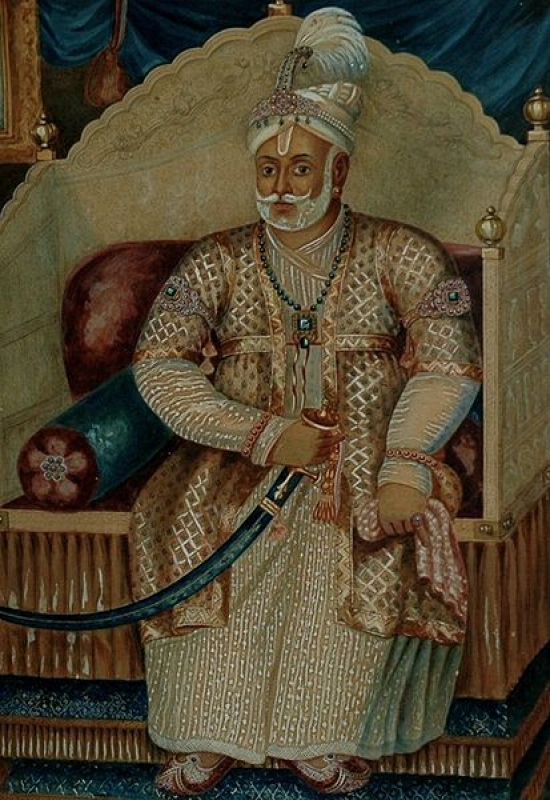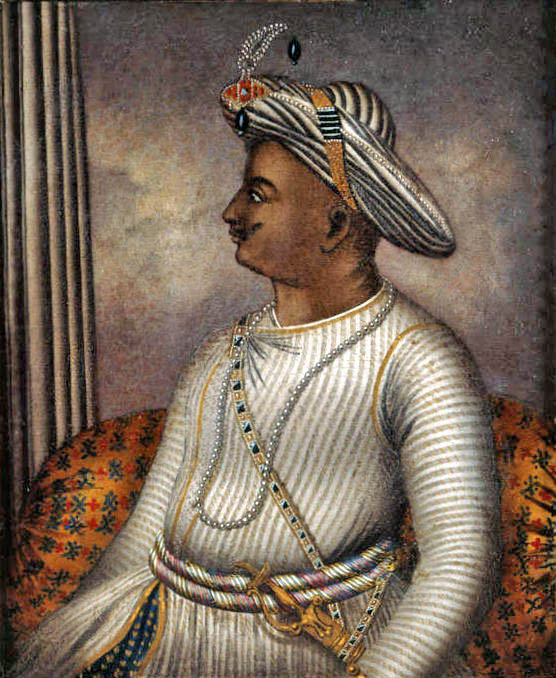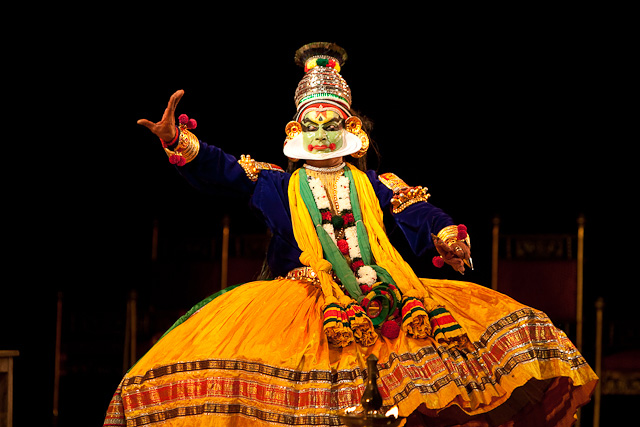The land of Bharatvarsha was blessed with many emperors who stood as the pillars of dharma, which made the efforts of marauders for mass conversion in this land fail unlike in many countries like Persia, Greece etc., One such emperor who obviated Kerala, the land of dharma from falling under the rule of invaders was Karthika Thirunal Dharma Raja Rama Varma of Travancore. He was addressed as Dharma Raja on account of his rigorous adherence to Dharma Shastras and for providing asylum to thousands of hindus and Christians from malabar during the incursion of Hyder Ali and his son Tipu Sultan.
Rama Varma was born in 1724 AD as the son of the Rani of Attingal and Kerala Varma Koil Thampuran. As he grew up, he took part actively in the military conquests of his uncle Anizham Thirunal Marthanda Varma and availed him in establishing the modern state of Travancore by annexing kingdom after kingdom up to Cochin. With the death of his uncle Marthanda Varma in 1758, Karthika Thirunal Rama Varma succeeded to the Travancore musnud. With the able services of the Dalawa Ayyapan Marthanda Pillai, Karthika Thirunal commenced his reign.

Hyder Ali had usurped the throne of Mysore and was keen to invade and bring the smaller kingdoms of Malabar and Travancore under his rule. In 1756, he invaded Malabar at the instance of the rulers of Palakkad and Kannur to help him regain his territories captured by the Samuthiri (Zamorin) of Kozhikode. The Samuthiri was driven away and saved his kingdom by acceding to pay the sum of Rs.1.2 million to Hyder Ali. In 1766, Hyder invaded Malabar for the second time. The Raja of Kolathunad fled to Travancore, while the Samuthiri after hastening his family’s departure to Travancore, committed suicide in his own palace by setting it on fire on being forced by Hyder to embrace islam. Hyder Ali also started treaty negotiations with the Dutch who since their defeat in the Battle of Colachel had been in awe of Travancore and kept the Maharaja of Travancore informed of all developments. As Travancore had given refuge to Hyder Ali’s enemies, Hyder asked the kings of Cochin and Travancore to pay the expenses of his Malabar campaign. The tribute to be paid by Cochin was Rs.400,000 and 10 elephants, while Travancore was asked to pay Rs.1.5 million and 30 elephants. Hyder added that if any of them refused, “He will pay a visit“. While the ruler of Cochin agreed, Karthika Thirunal of Travancore replied, stating that it was “neither to please him nor in accordance with his advice that the invasion of Malabar was undertaken”. But he stated that if Hyder withdrew from Malabar and reinstated the Kolathunad and Kozhikode rulers to their thrones and promise that Mysore forces will not invade Malabar territories in future, he would agree to a payment. This was taken by Hyder as a threat, but he had to return to Mysore after getting defeated by Travancore forces at Kodungallur fort.
In 1788, Tipu Sultan now the ruler of Mysore entered the regions of Malabar engaging in tactics that included the forced deportation to Srirangapatnam and the conversion of Hindus to Islam by force. The royal families of Malabar and large numbers of Hindu families fled to Travancore, where they were received and treated hospitably by the Maharaja. Tipu Sultan now demanded that the Raja of Cochin, who had accepted the status of a vassal, to claim Alangad and Parurso as to provide Tipu with a pretext for an invasion of Travancore. However, the Raja diplomatically assured Tipu that he would convince the Maharaja of Travancore to become a vassal of Tipu like himself. Tipu then sent envoys to Travancore with a Khareeta, wherein he stated that “I have learnt that you desire to cultivate friendship with our Sircar..”. The Maharajah received Tipu’s envoys in the presence of an East India Company representative, which was taken as an affront by Tipu. The Maharaja withal negotiated with the British for a force to assist in the defense of Travancore, anticipating an attack from Tipu Sultan. Finally in 1789, arguing that the Nedumkotta fortifications passed illegally through the territories of Cochin, his vassal state, Tipu Sultan accumulated his entire force in Malabar and marched to invade Travancore.

Tipu attacked the Nedumkotta again after waiting for three months for further reinforcements to arrive from Kodagu, Bengaluru and Srirangapatnam. For nearly a month, the Travancore army under the protection of the Nedumkotta lines, managed to defend the state. However, finally a breach of about 1 km in length was effected and the Mysorean army entered Travancore. Soon, the entire Nedumkotta fell into the hands of Tipu Sultan. The British forces stationed to assist Travancore did not provide aid to Travancore, but remained passive spectators, since they had not received orders from Governor Holland to fight with the Sultan, much to the despair of the Maharaja. Tipu’s army now devastated the whole of northern Travancore and reached Aluva where they camped on the Periyar river. Hindu temples were destroyed and the subjects fled to the forests. The entire country was laid waste with fire and sword. The Sultan and his army now moved to a place where the Travancore army had built a wall across the river obstructing the water, leaving the river-bed dry. In spite of the warnings of some of his Generals, Tipu decided to wage a battle here at night, certain of his superior numbers. Tipu first ordered two of his regiments to advance and take over the defences which they accomplished with valour. At day-break, the Travancoreans under Kunjai Kutty Pillai broke down the retaining wall, letting the water flood onto the Mysorean forces. A large number of Tipu’s soldiers were killed by the sudden flood and the road of succour and assistance to the advance guard was cut off. The remaining forces were defeated by a sudden attack by Travancore. Of the soldiers of Tipu, who formed the advance guard, none returned to the presence of the Sultan. Three or four hundred cavalry soldiers met with death in front of him. Tipu was begged off his Palki by his General Kamruddin Khan, who fell at his feet, asking him to retreat to his camp. Kamruddin saw to it that Tipu was carried on the shoulders of loyal soldiers across the waters to the other side of the river. The Sultan’s Palki with bed, some personal ornaments, and a dagger fell into the hands of Travancore soldiers. This made the sultan to retreat and go back to Srirangapatnam. Soon the Third anglo Mysore war started in which the joint forces of Travancore and British East India Company invaded Srirangapatnam which led to the defeat of Mysore and death of Tipu Sultan.
Apart from his famous stint of warfare against Tipu in which his forces remained as the only one which were not completely defeated by Tipu at any place, the Maharaja also performed many reform works which led to Travancore being one of the most developed states in Bharat during independence. Dharma raja was one of the very few rulers of that time who gave importance to science and technology for the development of his state. Communications were opened to facilitate trade and business in the state by the Maharaja. Ports were improved and various new products were exported by Travancore during this reign. Ship building was also given importance and several developments in this regard took place. The capital at Thiruvananthapuram was developed and infrastructure like bridges and other public works such as canals for irrigation were constructed. Bazaars and shopping centers were started for the benefit of the people.
The religious tolerance of the Maharaja is clearly evident from the letter of Pope Clement XIV wherein he thanked the Maharaja for the kindness shown to the members of his church in Travancore and officially placing all the Christians in Travancore under the protection of the sovereign during the invasion of Mysore. The Maharaja being a strict follower of Dharma shastras never caused danger to anyone who came under his protection irrespective of their caste, creed, religion etc., which clearly shows the tolerance for other religions in Hindu Dharma. The Maharaja being a dharmic ruler was a patron of many Vedic rituals. He also granted many lands to Vaidika families.

The Maharaja died on 17 February 1798, at the age of 74, after a long reign that was prosperous. He had maintained the sovereignty of Travancore and protected it from destruction by the superior Mysore forces. More importantly, he came to be known as Dharma Raja due to the asylum he provided to the thousands of people from Malabar fleeing to escape forced conversion or deportation by Tipu Sultan. So pleased were these subjects of Malabar that many families of kings and nobles stayed back in Travancore. Thus it is a shame to know the great Dharma raja of Travancore who stood as one of the unshakable pillars of dharma during the invasion of Kerala by invaders is completely ignored and forgotten from our memories, while the Islamic invader in Tipu Sultan is being hailed as a freedom fighter with the Congress government of Karnataka celebrating Tipu Jayanti honoring this cruel invader.
Note: This article first appeared at https://paanchajanya1284.wordpress.com/2016/05/31/dharma-raja-rama-varma-the-great-saviour-of-dharma-in-kerala/ and is being republished here with the permission of the author.
Did you like this article? We’re a non-profit. Make a donation and help pay for our journalism.

